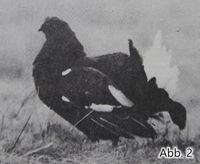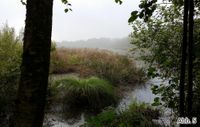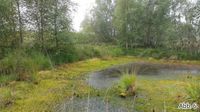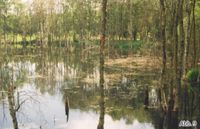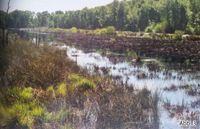No moss, no moor.
Every start is difficult - also in conservation?
A political majority is needed to declare a place to be a conservation area. But how do you go about restoring a peat cutting site to a working moorland landscape?
The idea was simple. For 200 years, the Great Moor had been drained. Peat, i.e. pressed peat moss, was extracted. Rewetting should now ensure that peat moss can grow again to restore the moor. However, this basic idea was too simple. Nature in our moor proved to be very much more complex.
The beginnings were characterised by failures. The 1000 black grouse (Fig. 2) that were present before the area was dedicated to conservation all disappeared.
The vegetation on the dammed water area remained largely unchanged. The dam helped to keep the water level constant. Only peat moss failed to grow here (Fig. 5). Contrary to expectations, peat moss grew amazingly quickly in the immediate vicinity (Fig. 6). On other wetted areas (Fig. 7) there was also no peat moss growth and in addition, the water level could not be maintained.
Figure 9 shows the flooded state in 1997, while Figure 8 shows the same location when it dried out in 2012.
In 1995, the Bockschen areas (Fig. 3) had lots of water, but no moss. The dam for blocking the water flow and the flooded area can be seen in Figure 4.
Links to other stations in the museum - in English language:
<1> <2> <3> <4> <5> <6> <7> <8> <9> <10> <11> <12> <13> <14> <15> <16> <17> <18> <19> <20> <21> <22> <23>
